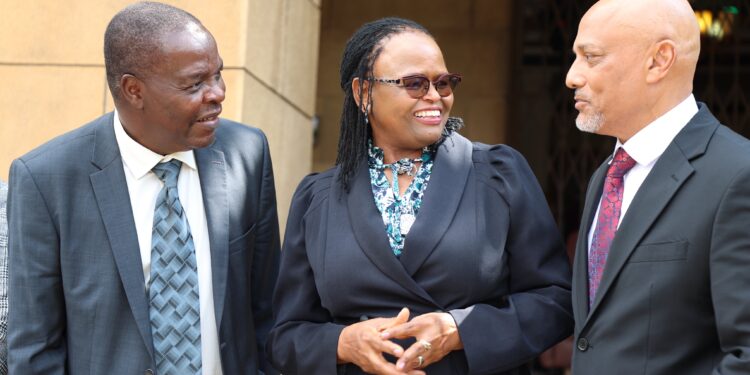Kenya’s governance landscape has been dominated by debates on reforms, the fight against corruption, and the government’s ability to deliver on its promises. The idea of “draining the swamp” – a popular phrase in global politics – has often been applied to Kenya’s efforts to tackle entrenched corruption. But the pressing question remains: are these efforts genuinely aimed at cleaning up the system, or are they mere distractions from deeper governance challenges in Kenya?
The Promise of Reform and Anti-Corruption in Kenya
Since President William Ruto assumed office, his administration has focused on fighting corruption, creating jobs, and initiating reforms to restore public trust in institutions.
This mirrors the promises made by previous administrations, including those of former presidents Uhuru Kenyatta and Mwai Kibaki, both of whom pledged to tackle corruption head-on.
These leaders often placed the fight against graft and the push for transparency at the center of their political campaigns.
The Kenya Kwanza administration’s agenda for its first 100 days included measures aimed at addressing unemployment, improving the economy, and cracking down on corruption.
High-profile investigations of senior officials suspected of embezzlement and public declarations of wealth by government officials were intended to demonstrate a commitment to fighting corruption.
However, while these steps initially generated optimism, they have often been followed by a familiar pattern: enthusiasm fades, and the fight against graft loses momentum.
The culture of impunity, weak enforcement, and deeply entrenched corruption across both public and private sectors have historically made it difficult to make lasting progress.
The Kenyan public, having witnessed repeated cycles of anti-corruption rhetoric, has become skeptical, noting that many officials under investigation manage to evade prosecution or continue in their political careers unscathed.

Impeachment of the Deputy President: A Genuine Threat or Political Distraction?
Amid these efforts, the recent discussions surrounding the possible impeachment of Kenya’s Deputy President Rigathi Gachagua have raised questions about whether this move represents a genuine attempt to clean up the political system or if it is just another distraction.
Also Read: Gachagua Impeachment: How to Fill and Submit Form to Save or Kick Out DP
The calls for impeachment have emerged due to allegations of misconduct and corruption within the office of the Deputy President.
However, the timing and political motivations behind the calls for impeachment have led some to view this as a strategic diversion rather than an earnest fight for accountability.
Impeachment proceedings could, in theory, demonstrate a high-level commitment to accountability, particularly if evidence supports the claims of wrongdoing. Yet, Kenya’s political history reveals that such moves often have more to do with political maneuvering than with genuine efforts to remove corrupt leaders.
In this case, the impeachment process may be perceived as a tactic to weaken political opponents or shift focus away from other governance failures.
Some argue that Kenya’s governance, under the guise of reforms, has relied heavily on political theatrics. The notion that anti-corruption efforts are used as political tools rather than sincere efforts to reform the system is reinforced by several factors.
- Selective Prosecution: A notable feature of Kenya’s anti-corruption campaigns is the perception of selective prosecution. High-profile figures aligned with the ruling class often appear immune from investigation, while those in opposition or out of favor with the administration face aggressive scrutiny. This selective approach undermines the legitimacy of the anti-corruption fight and raises concerns that it is being used as a tool for political consolidation rather than justice.
- Political Realignments: The constant reshuffling and realignments within Kenya’s political landscape also detract from the government’s focus on long-term policy reforms. Politicians frequently switch allegiances, forming or breaking coalitions based on personal gain rather than ideology or governance improvement. Such realignments shift attention from essential governance issues to short-term political survival.
- Public Relations Over Substance: The Kenyan government has also been accused of prioritizing optics over substantive governance reforms. Grand announcements on anti-corruption initiatives, infrastructure projects, and economic relief often dominate headlines, but the follow-through and tangible results are frequently lacking. High-profile arrests and press conferences rarely translate into long-term improvements, fueling cynicism among the public.
Also Read: Govt Explains Why It Forcefully Migrated Kenyans from NHIF to SHA
Systemic Challenges and Deep-Rooted Corruption
The crux of the issue in Kenya’s governance lies in the deeply embedded nature of corruption. Over the years, corruption has become institutionalized, with networks of individuals and organizations benefiting from the status quo.
These groups often resist any attempts at reform, making the fight against corruption extremely difficult.
- Weak Institutions: Institutions responsible for enforcing anti-corruption measures, such as the judiciary and law enforcement agencies, often lack the resources, independence, or political backing to function effectively. Investigations are delayed, prosecutions are rare, and the public loses faith in these institutions’ ability to deliver justice.
- Economic Inequality and Patronage: Kenya’s significant disparities in wealth and access to services create an environment where corruption thrives. Political leaders maintain control through patronage networks, distributing resources and favors to loyal supporters. This perpetuates a cycle of corruption, inequality, and disenfranchisement.
Follow our WhatsApp Channel for real-time news updates:
https://whatsapp.com/channel/0029VaB3k54HltYFiQ1f2i2C










































































